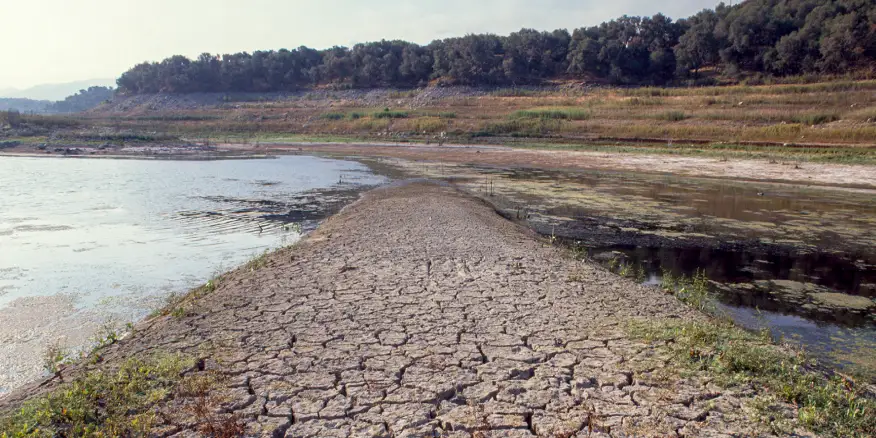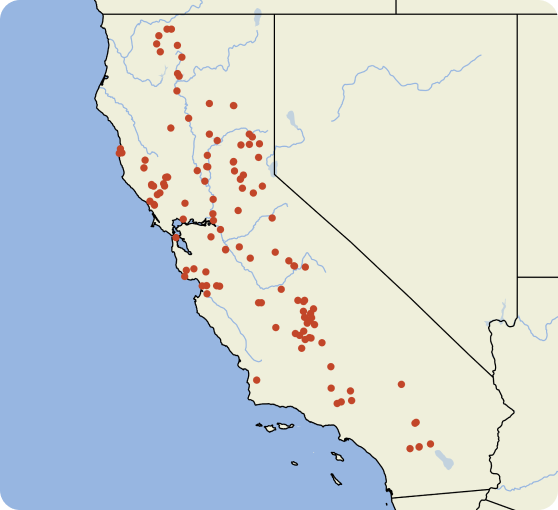
The Office of Data and Innovation (ODI) partnered with the Division of Drinking Water (DDW) to improve a tool that forecasts when drought will affect community water systems.
Project scope
- Timeline: 4 months
- Team: 2 data scientists, 2 physical scientists, 1 project manager, 2 program managers
- Reach: 39 million Californians served by 2,866 community water systems
Partner
Methods
- Data visualization
- Machine learning
- Statistical methods
The opportunity

DDW, a part of the State Water Resources Control Boards (State Water Board), regulates public drinking water systems. It monitors 2,866 community water systems across California. Every year, a small fraction of these water systems runs out of water. In some cases, the State Water Board helps supply these communities with bottled or hauled water.

This prompted DDW to develop a model to forecast the effects of drought on water systems. In early 2022, the model identified 510 community water systems likely to run into an issue. But investigating that many systems would take too many resources. DDW asked ODI to develop a more accurate model.
How we helped
ODI worked with DDW to build a new machine learning model. A machine learning model is a tool that helps make sense of a large amount of information and numbers. DDW has a lot of data about what water systems are and aren’t affected by drought. This made a machine learning model a good solution.
The model runs each spring. It is designed to identify issues that may arise during the dry summer months. This will allow community water systems to anticipate and fix problems before they happen.
The model is easy to use and understand. Researchers can experiment with it by adding more data sources and improving the model. They can also use “what if” questions to explain forecasts. This transparency builds trust with the community.
Our approach
We modeled the flow of:
- Water throughout the network of water systems in California
- Groundwater, through rocks and soil
- Surface water through streams, rivers, and reservoirs
Our dataset includes data from 2,866 community water systems from 2021 to 2023. We use 15 features and one outcome to describe each system. Four percent of water systems in our sample experienced some effects due to drought. They:
- Ran out of water
- Sustained themselves on bottled or hauled water
- Experienced a violation for inadequate source capacity
- Are under a water service connection moratorium
- Petitioned for exemption from a curtailment order
What we built
We used a machine learning model called a support vector machine. It calculates 15 features for each water system to determine if it will be resilient to drought.
We check the model through “what if” questions. The model makes forecasts based on these hypotheticals. This helps us identify what changes in the input data cause a change in the outcome.
This lets researchers explain forecasts and build trust with the community.
The model is designed to keep learning over time. As more data gets added, the model will get smarter each time. This will let the model serve the state for years to come.
Impact
DDW estimates the model saves them about 80 staff hours each year. Automated data collection alone went from 46 hours to 2.5. The entire process is 84% more efficient.
This time savings gives scientists at DDW more time for research and experimentation. Automation also reduces the chance for human error.
Recommendations
We gave DDW a roadmap to improve the model’s performance. The steps include:
- Continue to improve their data management. This will reduce manual data collection and check for errors.
- Use more data, including non-drought years. This will help researchers make more accurate forecasts across different conditions.
With these improvements, researchers can run rapid experiments. The more tests DDW runs, the better they’ll be able to forecast the impact of drought.
Learn more about ODI’s work on this project in our technical paper.